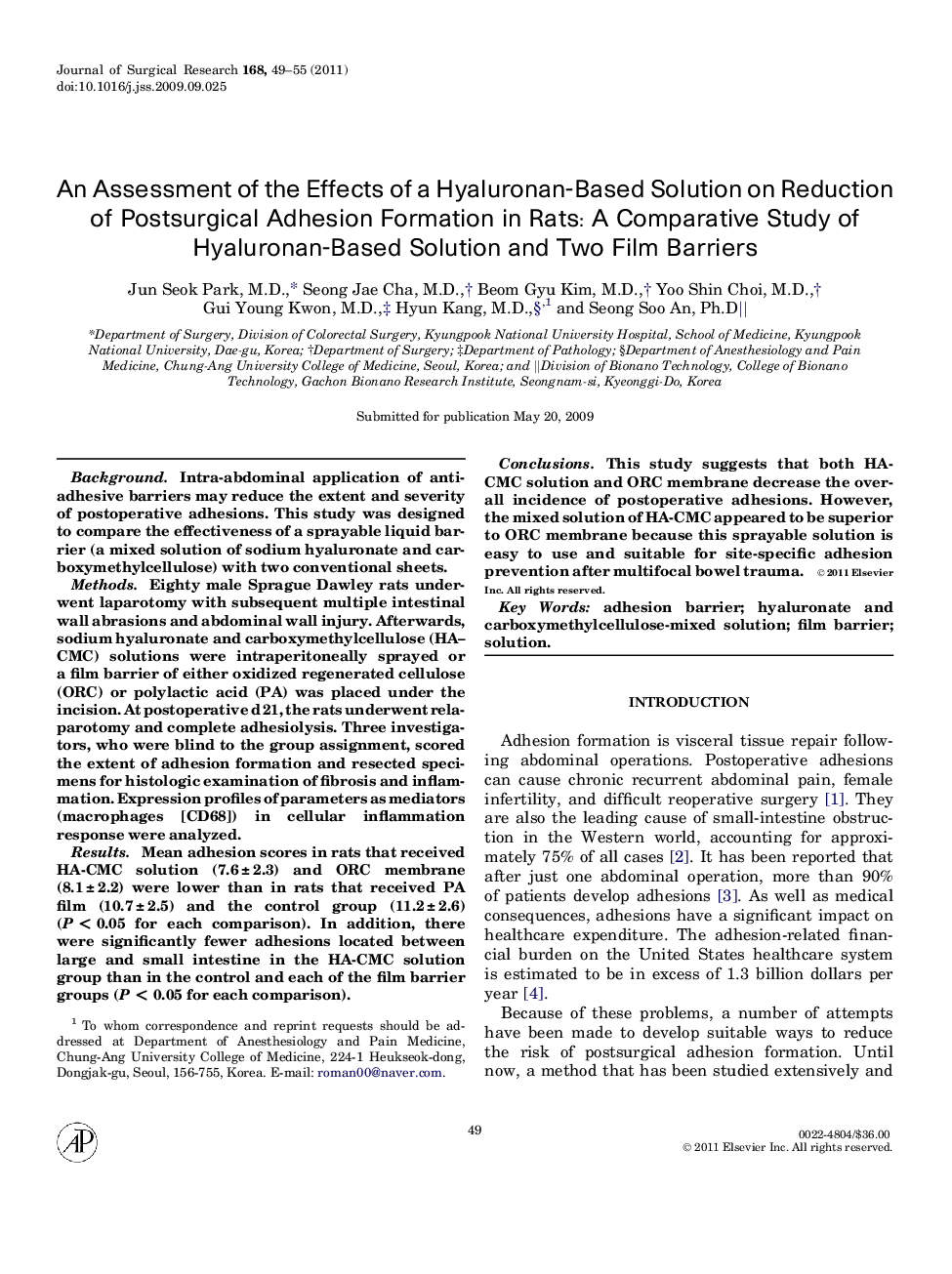| Article ID | Journal | Published Year | Pages | File Type |
|---|---|---|---|---|
| 4302182 | Journal of Surgical Research | 2011 | 7 Pages |
BackgroundIntra-abdominal application of anti-adhesive barriers may reduce the extent and severity of postoperative adhesions. This study was designed to compare the effectiveness of a sprayable liquid barrier (a mixed solution of sodium hyaluronate and carboxymethylcellulose) with two conventional sheets.MethodsEighty male Sprague Dawley rats underwent laparotomy with subsequent multiple intestinal wall abrasions and abdominal wall injury. Afterwards, sodium hyaluronate and carboxymethylcellulose (HA–CMC) solutions were intraperitoneally sprayed or a film barrier of either oxidized regenerated cellulose (ORC) or polylactic acid (PA) was placed under the incision. At postoperative d 21, the rats underwent relaparotomy and complete adhesiolysis. Three investigators, who were blind to the group assignment, scored the extent of adhesion formation and resected specimens for histologic examination of fibrosis and inflammation. Expression profiles of parameters as mediators (macrophages [CD68]) in cellular inflammation response were analyzed.ResultsMean adhesion scores in rats that received HA-CMC solution (7.6 ± 2.3) and ORC membrane (8.1 ± 2.2) were lower than in rats that received PA film (10.7 ± 2.5) and the control group (11.2 ± 2.6) (P < 0.05 for each comparison). In addition, there were significantly fewer adhesions located between large and small intestine in the HA-CMC solution group than in the control and each of the film barrier groups (P < 0.05 for each comparison).ConclusionsThis study suggests that both HA-CMC solution and ORC membrane decrease the overall incidence of postoperative adhesions. However, the mixed solution of HA-CMC appeared to be superior to ORC membrane because this sprayable solution is easy to use and suitable for site-specific adhesion prevention after multifocal bowel trauma.
